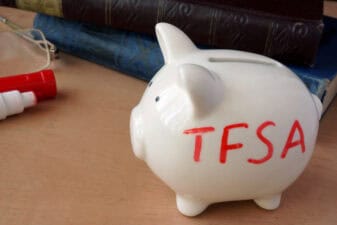The pandemic became a reality check for Canadians, not only for seniors but everyone with long-term financial objectives. Charles St-Arnaud, the chief economist at Alberta Central, said in June 2021 that savings had reached a record amount. He estimates the level to be around $230 billion.
The survey results of the Mackenzie Investments’ Retirement Reality Check 2021 released last month reveal that the overwhelming majority of working Canadians have started to save for their retirement. People these days want special types of investment accounts like the Registered Retirement Savings Plan (RRSP).
However, because of account mishandling, not all users derive the full advantage of the money growth and tax shelter features of the RRSP. If you use an RRSP as the vehicle to achieve your retirement goals, know the mistakes you must avoid when investing.
1. Unaware of contribution deadline
If you own an RRSP, contribute a portion of your income, preferably in investments, not cash. You can deduct them from your taxable income. Also, apart from the contribution limit, you should be aware of the March 1 contribution deadline. You can’t deduct RRSP contributions made after the deadline from your income, but you can do so until the following tax year.
2. Contributing at a higher tax rate
Dividend stocks are the preferred eligible investments in an RRSP. Apart from the potentially higher returns, money compounds faster when you reinvest dividends as you receive them.
However, one costly mistake is maximizing it when you belong to the high-income bracket. It means you contribute at a higher rate and withdraw at a lower rate. Under such circumstances, use the Tax-Free Savings Account (TFSA) instead.
3. Investing short-term
Ideally, the RRSP is for long-term investing. Thus, when contributing to your RRSP, make sure you won’t need the money anytime soon. You lose your RRSP contribution room permanently when you withdraw funds. Likewise, you lose the tax-sheltered compounding effect because there’s no opportunity to re-contribute once you withdraw.
Monthly dividends
Keyera (TSX:KEY) is suitable for an RRSP if your contribution is in investments. This energy stock pays a hefty 6.08% dividend. Assuming you can contribute $27,830, the maximum limit in 2021, the investment will generate $1,692.06 in passive income.
Since Keyera’s payouts are monthly, you’d have $141.01 per month. Your money should compound faster because you can reinvest dividends 12 times a year, not four. The $7.06 billion independent midstream company processes, transports, and markets clean-burning natural gas. Hence, its role in Canada’s energy industry is significant.
Keyera earned its dividend aristocrat status for increasing its dividends for 21 consecutive years. The company derives cash flow from fee-for-service contracts, and thus, fluctuations in commodity prices have no direct impact on its businesses. At $31.59 per share, current investors are up 47.56% year to date.
International diversification
Some RRSP users invest in foreign assets to have international diversification and diversity the risks. In the tax treaty between Canada and U.S., income earned inside retirement plans like the RRSP and a Registered Retirement Income Fund (RRIF) is exempt from the 15% withholding tax.
Remember, however, that money growth in an RRSP is tax-free while it remains in the plan. All withdrawals are subject to tax. When you reach 71 years old, you must withdraw the funds in a single lump sum or transfer them to an RRIF.







